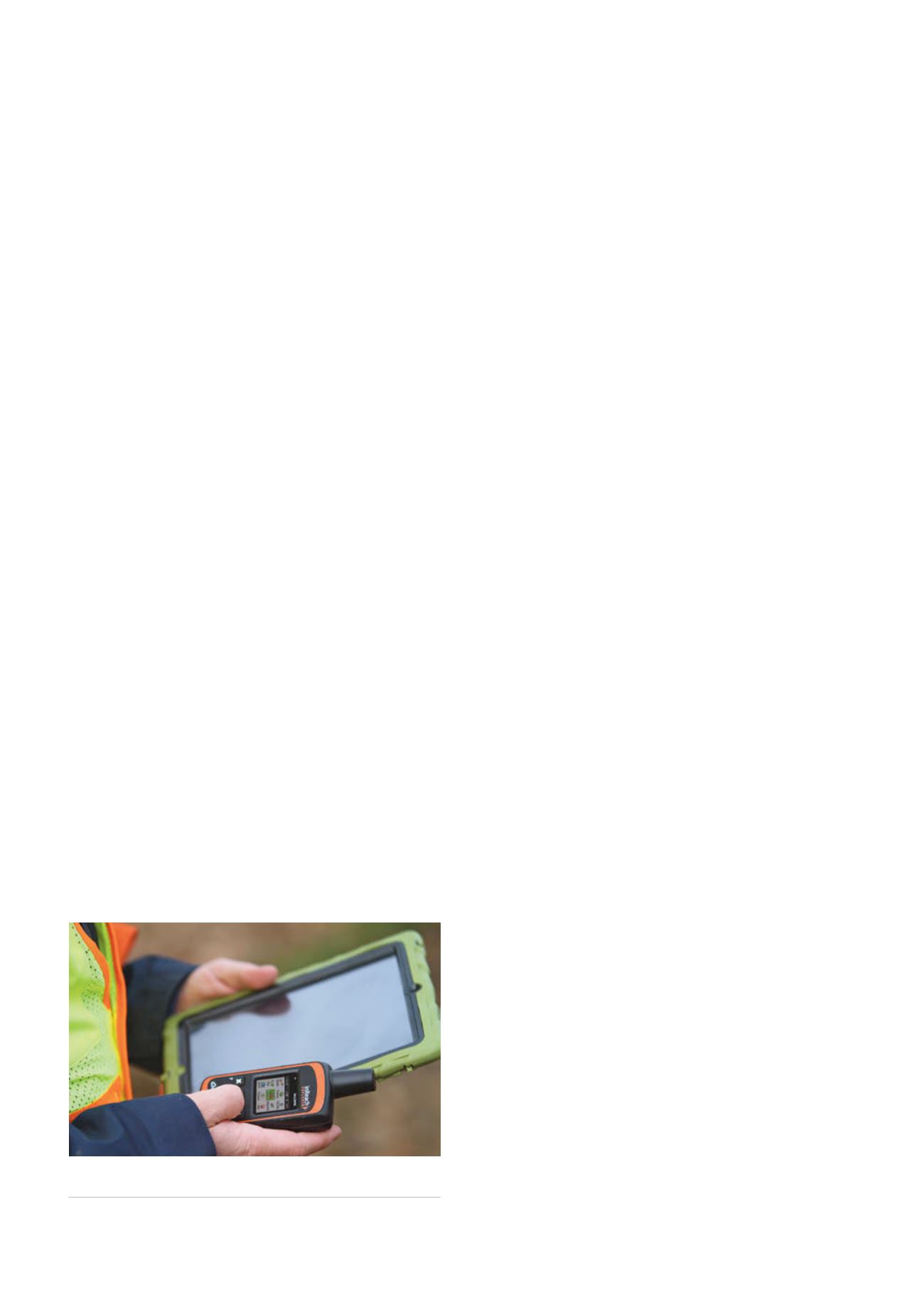
technology is often referred to as M2M (machine-to-machine),
since it involves machines (sensors and processors) communicating
directly with each other automatically without human intervention.
Also, sometimes referred to as the ‘internet of things; (IoT) or
‘telematics’, M2M is one of the fastest-growing sectors in today’s
economy. Virtually any type of asset can be tagged, tracked and
controlled – automobiles, lorries, construction machines, cargoes,
ships, aircraft, migrating birds, drones, spare parts, machinery, tools
and humans. The next generation of coffee makers and toasters
will likely have IP addresses, and driverless cars are already a
reality. According to a research study from Cisco, the M2M sector
worldwide is growing at a dizzying 30% annual rate. By 2020,
50 billion devices will be connected to the Internet, and the market
is projected to reach US$14.4 trillion within the next ten years.
In large measure, this astounding growth rate is being driven
by the rapid spread of broadband wireless networks, creating an
abundant supply of high-speed connectivity at relatively cheap
prices. There are now hundreds – if not thousands – of small,
lightweight wireless GPS trackers on the market, usually wrapped
with the suppliers’ application software for specific market sectors.
This is accelerating with the proliferation of mobile apps leveraging
the power and utility of smartphones and tablets.
Thus, safety managers are faced with a confusing array of
choices in wireless tracking and emergency alerting technologies.
They range from mobile apps that can be downloaded to the
workers’ smartphones, to dedicated automatic GPS remote
trackers sewn into the workers’ uniforms, to complex solutions
with sophisticated ‘man-down’ devices such as motion or tilt
sensors.
Satellites to the rescue
Unfortunately, the nature of the global pipeline industry is such
that workers spend a lot of their time in places beyond the reach
of terrestrial wireless networks. Their mobile phones are useless in
these remote locations, and so are any other solutions that rely on
cellular connections. The only way to communicate with workers
at these sites is either two-way, push-to-talk radio – which is
limited in range and vulnerable to interference and signal blockage
– or through satellite networks.
This adds another layer of complexity – and cost – to the
equation. It costs a great deal of money – billions of dollars – for
a network operator to launch and maintain a constellation of
satellites in orbit. This means prices of satellite communication
devices and airtime service plans are significantly higher than their
terrestrial counterparts. Prices also remain high because satellite
networks do not have the economies of scale enjoyed by land-
based wireless networks with millions of users.
Choices are limited when it comes to satellite-based solutions
for personal safety and security. Satellite phones can provide full
two-way voice telephony, but equipment and airtime service
costs are high. At the other end of the spectrum are one-way
satellite SOS beacons. While they are much less costly, these
simplex transmitters provide only one-way communication with
the sender, and the most popular offering on the market today
does not offer 100% global coverage. This poses significant risks
for both the remote workers and the operator, especially during
emergencies or when last-minute changes are required. With one-
way devices, the worker can send information to the operation
centre, but cannot receive any information, such as critical
instructions or questions about the situation at hand.
A new solution has recently made its appearance on the scene.
The inReach satellite communicator, manufactured by DeLorme
in the US, offers pipeline managers an efficient, cost-effective
solution for remote communications, tracking and navigation. For
almost 40 years, DeLorme has been known as a premier supplier
of mapping and navigation products. The company’s XMap GIS
software is widely known throughout the oil and gas industry.
About three years ago, DeLorme made a strategic decision to
expand beyond its software and GPS focus and launch a line of
personal satellite communication devices seamlessly integrated
with GPS technology.
The inReach is a two-way handheld unit that communicates
through the Iridium satellite network – offering 100% global
coverage without service gaps or fringe zones. The DeLorme
satellite communicators are offered in two versions: inReach SE
and inReach Explorer. Both inReach models combine GPS tracking
and locating, interactive SOS alerting, two-way text messaging
and unlimited access to topographic map data in paired mode
with mobile devices. The inReach automatically transmits its
GPS co-ordinates at pre-selected intervals through the Iridium
satellites, allowing authorised followers to view its current position
and movements on a map online. Authorised followers can also
‘ping’ the device at any time to request a position update on
demand. The inReach unit’s dedicated SOS button, when activated,
immediately sends a distress alert to a response centre with receipt
acknowledgement. In addition, the inReach communicator can be
used to send and receive 160 character SMS messages tagged with
the user’s GPS position. The inReach Explorer model has additional
built-in navigation features, including a digital compass, altimeter
and accelerometer. This allows the user to navigate from point to
point, create waypoints and routes and retrace a ‘bread-crumb’ trail
to a previous location, enabling self-rescue.
The inReach differs from other satellite tracking and SOS
devices in that it is a two-way communicator, and not a one-way
transmitter. This means if a distress alert is initiated, a response
is sent within minutes from the emergency response centre
confirming that the SOS message has been received. It also allows
the responders to confirm that the distress alert is not a false
alarm, and to ask questions about the nature and urgency of the
emergency so they can respond with appropriate resources. In
many cases, they may not need to dispatch a medevac helicopter
(which can cost tens of thousands of dollars per incident) if
Figure 2.
inReach can be paired wirelessly via Bluetooth with
a smartphone or tablet.
82
World Pipelines
/
JULY 2015


